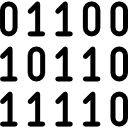Functions of the arithmetic logic unit (ALU): Difference between revisions
Mr. MacKenty (talk | contribs) (Created page with "frame|right|This is a basic concept in computer science An arithmetic logic unit (ALU) is a digital circuit used to perform arithmetic and logic operation...") |
Mr. MacKenty (talk | contribs) No edit summary |
||
| Line 1: | Line 1: | ||
[[File:binary.png|frame|right| | [[File:binary.png|frame|right|How does a CPU work?]] | ||
An arithmetic logic unit (ALU) is a digital circuit used to perform arithmetic and logic operations. It represents the fundamental building block of the central processing unit (CPU) of a computer. Modern CPUs contain very powerful and complex ALUs. In addition to ALUs, modern CPUs contain a control unit (CU). | An arithmetic logic unit (ALU) is a digital circuit used to perform arithmetic and logic operations. It represents the fundamental building block of the central processing unit (CPU) of a computer. Modern CPUs contain very powerful and complex ALUs. In addition to ALUs, modern CPUs contain a control unit (CU). | ||
Revision as of 05:13, 23 August 2016
An arithmetic logic unit (ALU) is a digital circuit used to perform arithmetic and logic operations. It represents the fundamental building block of the central processing unit (CPU) of a computer. Modern CPUs contain very powerful and complex ALUs. In addition to ALUs, modern CPUs contain a control unit (CU).
Most of the operations of a CPU are performed by one or more ALUs, which load data from input registers. A register is a small amount of storage available as part of a CPU. The control unit tells the ALU what operation to perform on that data and the ALU stores the result in an output register. The control unit moves the data between these registers, the ALU, and memory.[1]
Major parts of a CPU
These videos are truly superb to help you understand parts of a CPU, and how they work.
